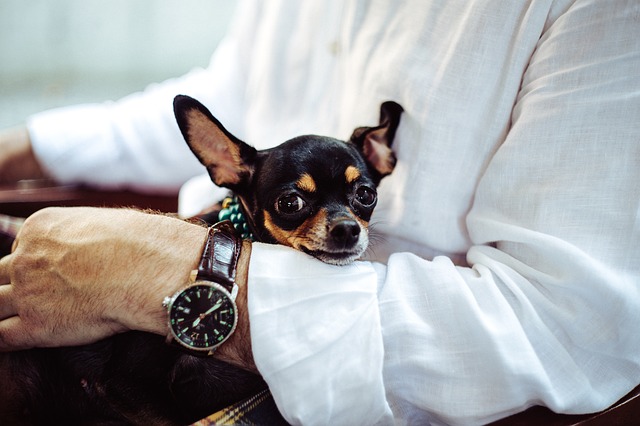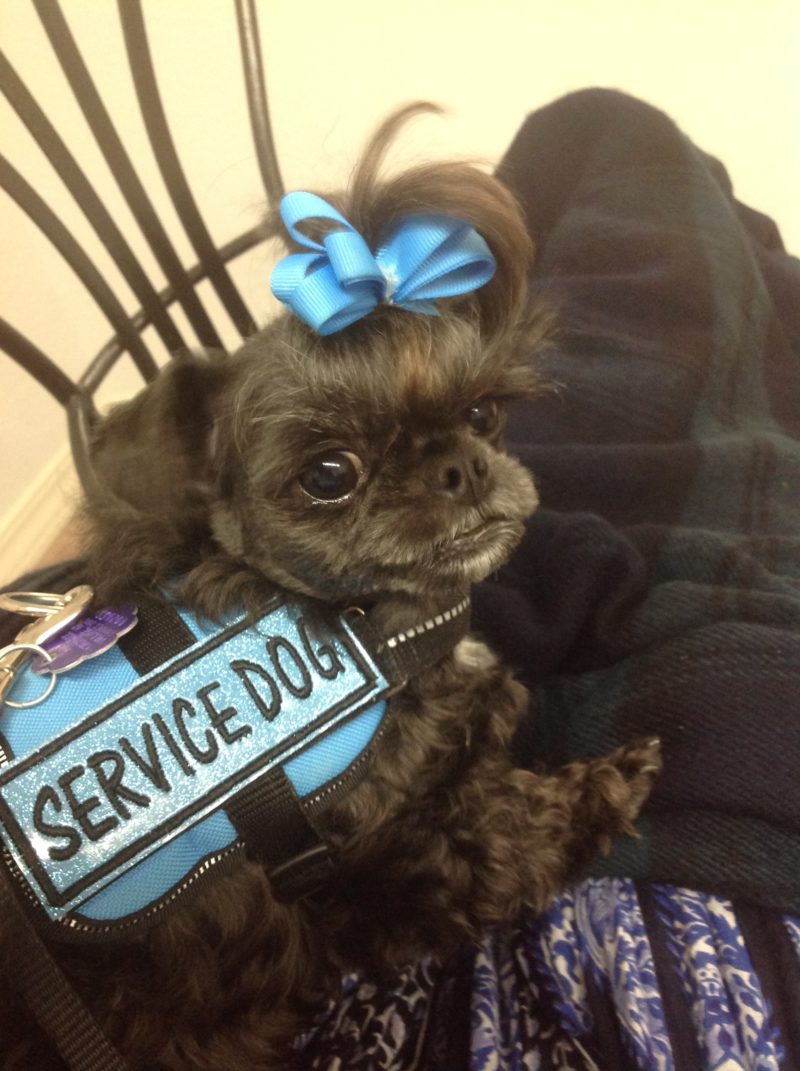Golden Retrievers, Labradors, and German Shepherds are the first breeds that come to mind when you think about service dogs, but they’re not the only kinds of canines trained to work. Smaller breeds, like Chihuahuas, Miniature Poodles, Shih Tzus, and terrier mixes also excel in the working world. They might not fit the preconceived image of what a service dog should be, but to their owners, these pint-sized dogs offer invaluable assistance.
Here are a few of the jobs small service dogs excel at.

#1 – Hearing Dogs
People with hearing impairments use their dog’s keen ears to alert them to specific noises. Door bells, fire alarms, crying babies, and people initiating conversation are all sounds a service dog can alert to. Most hearing dogs are trained to touch their humans in a specific place and lead toward the direction of the noise.
While sign language is used for communication, alert dogs are often needed for those sounds that can’t be translated. Any dog with ears can be trained in this task, and Lhasa Apsos, Chihuahuas, and several small breed mixes excel at the job.
#2 – Tachycardia Episode Alert
A tachycardia episode is when a person’s heart beats too fast. It prevents blood from being effectively pumped throughout the body and causes numerous symptoms including shortness of breath, chest pain, and fainting. Dogs are trained to monitor their handler’s heart rate and blood pressure and warn them of changes even before they feel symptoms.
AnnaBelle Lee is a Pekingese Poodle mix trained to tell her owner, Candice, when a tachycardia episode is coming. With AnnaBelle Lee’s warning, Candice knows to sit down if she’s standing so she doesn’t get dizzy and fall. AnnaBelle Lee only weighs four pounds, and Candice usually keeps her close to her body in a sling where she can easily do her job.

# 3 – Hallucination Discernment
AnnaBelle Lee does another important job for her owner. Candice has neurological and mental disabilities and frequently suffers from visual and auditory hallucinations. Candice can look to her service dog for responsive cues that tell her whether what she’s seeing or hearing is real or a hallucination.
When they’re walking through a store or another public place, Annabelle Lee’s small size allows her to go generally unnoticed by other people, and she’s better able to do her job.
#4 – Diabetic Alert
People with diabetes monitor their blood sugar regularly, but changes can happen rapidly and without obvious warning. A diabetic alert dog is trained to detect when blood sugar is too high or too low and to alert their handler of the dangerous situation. They use their incredible sense of smell to pick up on organic chemicals in the body.
The distinct odor is undetectable to humans, but certain dogs have a natural affinity for sniffing them out. The behavior is reinforced with training, and the result is a dog that can alert someone with diabetes when they need to take steps to return their blood sugar to a more normal level.

# 5 – Psychiatric Support
In addition to medical alerting, small service dogs are also trained to assist people who suffer from certain psychological conditions and disabilities. Jasper is a nine-year-old Yorkshire Terrier who helps patients at Calm the Storm Addictions and Counseling LLC Transitional Housing Program in Port Charlotte, FL.
One of his main responsibilities is to serve as a protective barrier for people with agoraphobia. Agoraphobia is a fear of being in a place which could cause a panic attack. Crowds of people and unfamiliar surroundings can be triggers, and simple tasks like shopping and going out in public are made emotionally distressing. Weighing only five pounds, Jasper lets his handler hold him close to their chest where the calming pressure of his body acts as both a protective barrier and emotional support.
Service dogs come in all shapes, breeds, and sizes. In some cases, like with Candice and Annabelle Lee, having a big service dog is out of the question. Big dogs take up more room and are more expensive to vet and feed. Big dogs are trained to be as gentle as possible, but they can’t help their body weight being too much pressure for a medically frail person to handle. Small service dogs can alert and provide comfort without being overbearing. No breed is off limits when it comes to training a service dog, and even the smallest dogs can have big jobs to do.
